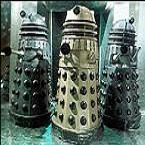Dunedain
Posts: 224
Joined: 4/4/2000
Status: offline

|
Paul wrote:
"If a TF "Acts like minefield" and sits in a hex the entire turn, its easier
to quickly figure out, that is the line along which possible future tweaks
may be made, so you can patrol a choke point by begining the turn there
with no movement orders (patrolling)."
This would be a very big improvement over what we have now. :)
And it would avoid the raised issue of TF's chasing each other
all over the place in some sort of goofy chain reaction.
As long as the player can send a surface combat TF to any hex
he wants with orders to "react to enemy", so that if the TF spots
enemy ships passing through that hex, the commander will make
his best effort to intercept and engage those ships.
P.S. I want to further clarify what I mean, since it might have
come across wrong above.
Surface combat TF's need the ability to intercept enemy TF's whether
either of the TF's are in mid course or at a destination hex.
Making TF's like mines once they get somewhere and don't
move doesn't help, because I believe it's been pointed out
that TF's can already be ordered to go to a destination hex
and have the TF react once they are there sitting at the
destination hex. So that wouldn't change anything.
If the player sends a surface combat TF up the slot and a
jap CA TF is coming down the slot, there should be a
chance that they will spot each other once they both enter
the same hex as they travel along their routes. Once one TF
spots the other, and if the TF has previously been
given orders to engage enemy ships, then the commander
would try to intercept and fire on the enemy TF.
If the other TF has orders to retire (or if the commander decides
he had better run because he's not a very aggressive CO or
because he sees he's outclassed), and if it's speed is close to, equal
to or better than the attacking TF, then there is a very good
chance that only a few shots would be traded, if any. But if the
evading TF is significantly slower than the attacking one (or if the
other TF commander also chooses to engage), then there should
be a real chance that they can force the fight on the fleeing TF.
The exact speed difference between each TF, commander
experience, weather, time of day, etc. would obviously play a
big role in all this.
And this would only apply to TF's that pass through the same hex,
not other nearby hexes. This will keep potential encounters from
becoming common, and yet provide for realistic battle opportunities
between surface combat TF's that want to fight it out
(or slow TF's that can't get away from the attacking TF). :)
|
 Printable Version
Printable Version









 New Messages
New Messages No New Messages
No New Messages Hot Topic w/ New Messages
Hot Topic w/ New Messages Hot Topic w/o New Messages
Hot Topic w/o New Messages Locked w/ New Messages
Locked w/ New Messages Locked w/o New Messages
Locked w/o New Messages Post New Thread
Post New Thread